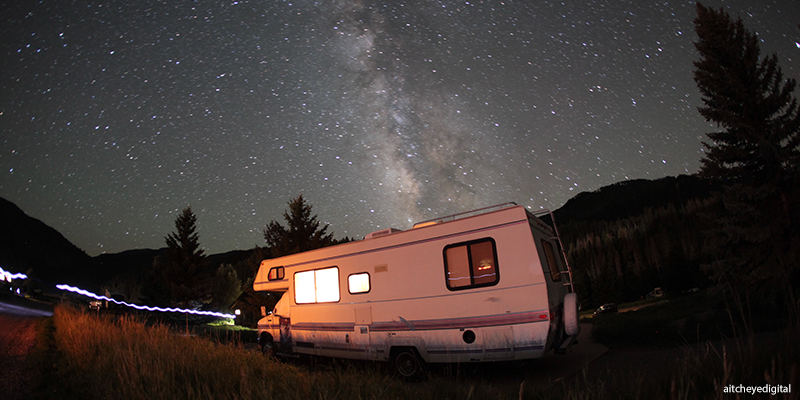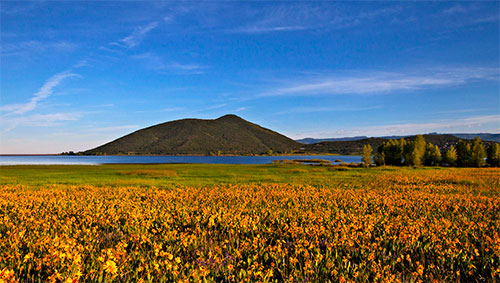Tips on RV Camping and Travel in Colorado
RV Camping Vacation
Experiencing Colorado by way of traveling in an RV makes sightseeing, visiting mountain towns, and participating in your favorite activities very much on your own terms. RV camping or travel is a great way to spend your summer vacation. You get a real taste of what the mountain lifestyle has to offer. A home on wheels allows you to visit as many or as few places as you’d like, which, in Colorado, means you have a litany of options. National and state parks, BLM land, and RV parks… RVs give you a lot of freedom when it comes to traveling and taking a break.
Where to Park Your RV
If you’re looking to RV camp long-term, you’ll probably want to check out one of Colorado’s many RV parks. These RV camping parks usually have the full set of amenities and hookups that vacationing in an RV can offer. At Ancient Cedars at Mesa Verde RV Resort, located just outside of Mesa Verde National Park, you’ll have your pick of RV camping spots, which come equipped with electricity, sewage, and water hookups, and have options for big rigs, TV reception, and those who want a shadier, wooded spot. At Bighorn RV Park in Coaldale, you’ll have all this, plus a great spot for fly fishing and great views of Rocky Mountain Bighorn Sheep, the park’s namesake, on the rocky cliffs right on the other side of the river. RV camping parks are a great way to go if you’re looking to feel like part of a community or if you’ve been on the road for quite some time and want to take a long shower and do some laundry. Many offer picnic areas, wifi, fire pits, bathrooms, and other amenities for camping in style.

Suppose privacy and quiet are what you’re after. In that case, dispersed camping is also an option, especially if you have a smaller camper or a Sprinter van. However, many remote camping locations in national forests and other areas where dispersed camping is allowed may be inaccessible for larger RVs and campers. Dispersed camping offers the highest level of privacy, freedom, and cost-effectiveness. There are no amenities, and you’ll have to remain off-grid, but you’ll find more beautiful, serene, and peaceful spots than any designated RV campground. Remember, wherever you camp, but especially in the wilderness, it’s important to be mindful of the environment, which means packing out all your materials and being aware of the impact you and your vehicle may have on roads and trails. Use existing campsites whenever possible, generally identifiable by existing fire rings and found along many county or forest access roads. Check for specific regulations regarding camping at your destination (burn bans, camping rules), and above all, leave no trace.
Renting an RV
Not everyone owns an RV or camper, but that doesn’t mean you must miss out on all the fun. RV rental companies are all over the state; you can rent a towable camper or a big rig RV that will comfortably fit the whole family. Companies like RV Share or Cruise America have plenty of options to give you exactly what you’re looking for, and many offer options like one-way trips and unlimited mileage, so you can take the opportunity to drive all over Colorado and beyond (a trip to see all four Colorado National Parks, anyone?).

If you know where you want to go, many campsites offer on-site RV rentals, like Dolores River Campground in Dolores, CO (You can also rent a Conestoga Wagon, a yurt, or a cabin; you can also bring your own RV), where you can stay in a cozy, tricked-out Airstream trailer.
Another fun trend that’s arisen for more minimalist or solo adventurers is van camping. KúKú Campers is a camper van rental company that lets you get the full van camping experience—complete with a bed, dining table, and even a travel-friendly kitchenette—without having to go through the process of outfitting your own van.

Before You Head Out
Road Conditions and Mountain Driving
Colorado’s roads, especially mountain roads, and passes, can be dangerous to drive in the best of weather. Many passes involve navigating steep, winding, narrow roads with limited or no shoulder. The majority of Colorado’s rural highways and county roads are only two lanes with no shoulder. Not only do you have to pay full attention to winding, hilly driving challenges, but there is a lot of wildlife throughout Colorado—even more wildlife in rural areas. Colorado still abides by Open Range Laws. This means cattle are grazed freely on public lands or on any lands. Fences are used to fence out animals, not to keep them in. So, if the mountainous road conditions aren’t challenging enough already, be on the lookout for wildlife and cattle. Additionally, road construction and natural disasters such as mudslides, rock slides, high winds, avalanches, and wildfires all contribute to road conditions. Please check CDOT for current road conditions and closures. Mountain driving is serious, be prepared mentally, ensure your vehicle is in good shape, and check resources for conditions.
Wildfire
Due to Colorado’s diverse terrain, elevations, and quickly changing weather conditions. Wildfires need to be assisted. You might need to alter your route to avoid fast-moving wildfires. Not only is it best to avoid wildfire, but the smoke from the fire can be just as hazardous. Please check the Coloradoan.com fire and smoke data map for current conditions.
By Emily Krempholtz






